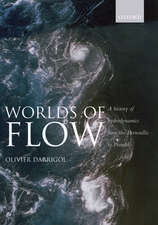Diffuse Scattering and Defect Structure Simulations: A cook book using the program DISCUS: International Union of Crystallography Texts on Crystallography, cartea 11
Autor Reinhard B. Neder, Thomas Proffenen Limba Engleză Hardback – 19 noi 2008
Din seria International Union of Crystallography Texts on Crystallography
- 18%
 Preț: 410.57 lei
Preț: 410.57 lei - 17%
 Preț: 356.72 lei
Preț: 356.72 lei - 21%
 Preț: 426.39 lei
Preț: 426.39 lei -
 Preț: 332.10 lei
Preț: 332.10 lei - 11%
 Preț: 486.92 lei
Preț: 486.92 lei - 11%
 Preț: 302.02 lei
Preț: 302.02 lei - 21%
 Preț: 652.06 lei
Preț: 652.06 lei - 17%
 Preț: 522.34 lei
Preț: 522.34 lei - 25%
 Preț: 619.97 lei
Preț: 619.97 lei -
 Preț: 310.12 lei
Preț: 310.12 lei - 21%
 Preț: 501.49 lei
Preț: 501.49 lei - 11%
 Preț: 330.04 lei
Preț: 330.04 lei - 34%
 Preț: 1244.52 lei
Preț: 1244.52 lei - 34%
 Preț: 847.71 lei
Preț: 847.71 lei - 25%
 Preț: 657.44 lei
Preț: 657.44 lei
Preț: 543.61 lei
Preț vechi: 691.12 lei
-21% Nou
Puncte Express: 815
Preț estimativ în valută:
104.02€ • 108.90$ • 86.07£
104.02€ • 108.90$ • 86.07£
Carte tipărită la comandă
Livrare economică 25-31 martie
Preluare comenzi: 021 569.72.76
Specificații
ISBN-13: 9780199233694
ISBN-10: 0199233691
Pagini: 240
Ilustrații: 103 line drawings and 32 b+w halftones
Dimensiuni: 194 x 253 x 17 mm
Greutate: 0.72 kg
Editura: OUP OXFORD
Colecția OUP Oxford
Seria International Union of Crystallography Texts on Crystallography
Locul publicării:Oxford, United Kingdom
ISBN-10: 0199233691
Pagini: 240
Ilustrații: 103 line drawings and 32 b+w halftones
Dimensiuni: 194 x 253 x 17 mm
Greutate: 0.72 kg
Editura: OUP OXFORD
Colecția OUP Oxford
Seria International Union of Crystallography Texts on Crystallography
Locul publicării:Oxford, United Kingdom
Notă biografică
Professor Reinhard NederMy MSc thesis at Arizona State University involved HRTEM and electron diffraction. After having received my PhD in crystallography at the Ludwig-Maximilians University, München, Germany, I stayed on as Post Doctorial Fellow at the same department. From 1997 until 2007 I held a professorship for crystallography at the Julius-Maximilians-University in Würzburg, Germany and since 2007 I am professor for crystallography at the University Erlangen-Nürnberg, Germany. During PhD I began to learn about disordered materials, and neutron diffraction and from this experience the DISCUS program started. During my Post Doc time, I mainly gained experience in the field of synchrotron based X-ray diffraction on microcrystals, many of which also were disordered. I also started to develop teaching interests that involved courses on diffraction techniques. During my work in Würzburg, I began to study nanocrystalline materials, which are my current focus in Erlangen as well.Dr Thomas ProffenI received my PhD in Crystallography in 1995 from the Ludwig-Maximilians-University in Munich, Germany. My involvement with the program DISCUS dates back to my time as an undergraduate student in Munich. The next stop was a postdoctoral appointment with Prof. Welberry at the Research School of Chemistry where I learned a lot about Monte Carlo simulations of disordered materials. In 1998 I joined Prof. Billinge's group at Michigan State University expanding my expertise in the area of total scattering from powder samples. During all this time, my main focus was to apply diffraction techniques to study disordered materials and every stop along the way resulted in a new module in DISCUS. In 2001 I joined the Lujan Neutron Scattering Center at Los Alamos National Laboratory where I am the instrument scientist for the total scattering diffractometer NPDF continuing my quest to understand disordered materials.













